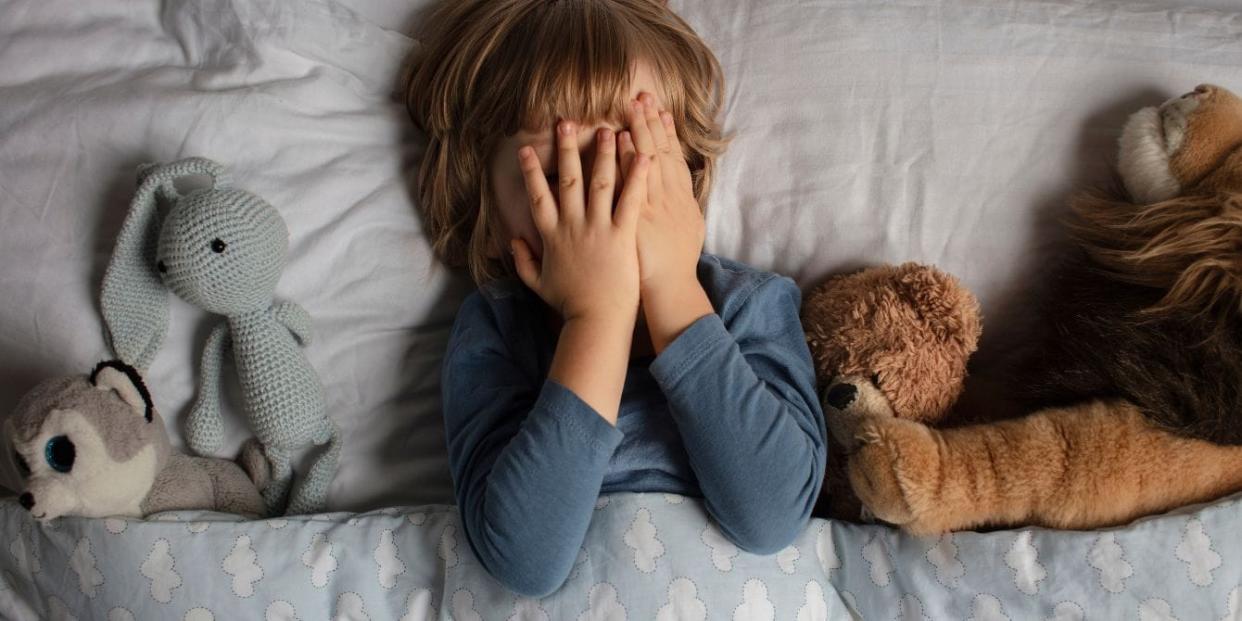Halloween can be terrifying for kids with Sensory Processing Disorder

My son, who has Sensory Processing Disorder, has a deeply rooted phobia of skeletons that started when he was two-years-old. From late August through October, when all the Halloween decorations are out, I dread entering any store with him. Dismembered limbs, creepy, haunting laughs, grim reapers and bloodied faces. It’s enough to twist my gut—I can only imagine what it makes him feel inside. I often wonder why society has twisted a night of childhood fun into a competition for the most terrifying and horrifying displays. Do neighbors ever think about how a sensitive child or adult might respond to their front lawn decorations?
Craft and certain big name warehouse stores are the worst offenders—their love of Halloween decor knows no bounds. Talking skulls blowing smoke out of their craniums. Skeletons dressed in fuchsia boas and pointy witch hats. Even skeletons hovering over tombstones with wicked smiles, molded into their plaster of paris faces. They stock it all, and often offer killer deals too (no pun intended).
Getting my son inside a store during this season means we’ve had to come up with creative ways to block out the frightening displays. One of our best coping mechanisms involves him climbing into a cart before we’ve even made it inside. I can see his limbs trembling and I know his heart is beating faster as his shaky voice double checks, “You’re gonna give me the sign, right Mom?”
“Yes,” I promise. “I’ll tell you when it’s safe to look.”
In the fetal position, his eyes squeezed shut and his hands pressed over his ears, he blocks out the world until we pass the decoration aisle(s). When I’m sure it’s safe, I shake his shoulders giving him the “coast is clear” sign. Sometimes the decorations aren’t contained to one section though. Once he came tearing down an aisle and buried his face in my jacket, his loud sobs only slightly muted as we walked the rim of the store to avoid the skeleton he’d seen on an alcohol bottle when he dared to venture towards the toy section. People stared at us as we made our exit and decompressed in the car.
This time of year, a plethora of skeletons post up in local neighborhoods, too. Most are sitting comfortably in lawn chairs or front porch swings, people-watching through their empty eye sockets. If they could talk—oh, the stories they’d tell. But my son doesn’t see it like that.
When our new neighbors put out their skeleton the first year they moved onto our street, I rehearsed what I would say to them a hundred times in my head: Hey, my son has a really terrible phobia of skeletons. It’s stressing him out to drive past your house every day. He ducks each time we pass and begs me to go “the other way” so we don’t have to see it. He’s had a couple of nightmares too.
But I never sent that text or had that conversation in person. Maybe I wanted my son to “face his skeletons” or continue to figure out coping mechanisms. More likely, I was just too embarrassed to say something. That first year they moved in, we were walking in our neighborhood when he slipped his hand into mine and told me he wanted to “campaign” against Halloween decorations.
He’s almost twelve now. On our recent grocery haul, he curled up in the fetal position in the shopping cart, like always. His body, bigger now, presses against the metal frame like a caged animal in a crate two sizes too small. He’s outgrowing the cart, but not the phobia. These days, it’s less about skeletons for him and more about the super creepy Halloween decor.
So, this Halloween season I’m joining his campaign. To all the neighbors and big stores too, Halloween for kids with Sensory Processing Disorder can be can be extremely frightening. Please know that the scarier your decorations, the more my child experiences terror. For the sake of my kid and all others going through the same seasonal struggle, please be more mindful of how you show up for this holiday.


